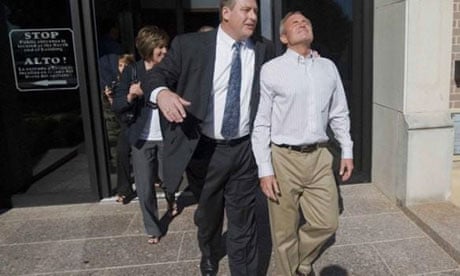 The state Senate has now passed a bill to bring criminal handling of those drugs into line with methamphetamine, and the measure is before the Assembly. SB 649, by Democrat Mark Leno of San Francisco, is good policy and should be adopted.
The state Senate has now passed a bill to bring criminal handling of those drugs into line with methamphetamine, and the measure is before the Assembly. SB 649, by Democrat Mark Leno of San Francisco, is good policy and should be adopted.
The bill is an improvement over a version Leno offered last year to convert possession to a misdemeanor, with no felony option.
True, there is something perverse about locking people up for any period for possessing highly addictive drugs for their own use. Most offenders have the stuff on hand because they are hooked. For years California sent such addicts to prison, where little or no treatment was available. They were released on parole, which they were practically fated to violate by using drugs again — because they were, after all, addicted.
This foolhardy approach gave California a steady supply of unrecovered addicts shuttling between prison and the streets. That meant continuing damage to neighborhoods dealing with the addicted, plus overcrowded prisons. At the end of last year, for example, there were more than 4,000 inmates in state prison for possessing drugs for personal use.
It would be better to divert addicts from the criminal justice system entirely if they could be successfully treated without ever going to jail or even to court. But for many addicts, there remains a role for punishment, or at least the threat of punishment. Addiction may be a disease, but the afflicted include families, neighborhoods and, ultimately, all of society, and they all have a stake in successful rehab. When the carrot of a clean life is insufficient to keep an addict in recovery, the stick — the prospect of a criminal sentence — remains there for backup.
Some argue that these drugs ought to be decriminalized altogether, as California has done with marijuana. Simple possession of cannabis for personal use is now not even a misdemeanor here but a traffic-ticket-like infraction, punishable by a fine.
The key distinction, though, is the addictive nature of cocaine, heroin and the other drugs covered by current felony laws. Addiction affects the user's behavior — and thus imposes its damage on society and not just on the user — well past the period of intoxication. There is room for a conversation about whether decriminalization is nevertheless a more rational approach for addictive drugs, but it's not the conversation, or the bill, at hand. Either SB 649 is a smart reform, or it's a good first step in a more far-reaching sentencing revamp. Either way, it's better than the status quo.
Opponents of the bill offer a number of arguments against the measure, but they fall flat. Reducing the penalties doesn't make a drug any less dangerous or addictive, they say. True enough, but so what? The existing law doesn't keep users from getting hooked in the first place. There is little point in locking up addicts for as long as three years if it's not part of a larger program to get them clean.
Misdemeanor convictions mean a year in county jail instead of up to three years in state prison, prosecutors argue, and jails are already filled to capacity. But this argument practically answers itself. Prisons too are filled well past capacity and have been under orders from a panel of federal judges to reduce their inmate populations.
And the point is moot anyway for people convicted of simple possession since October 2011, when the public-safety realignment program went into effect. They already are spending their 18 months (and up to three years) in county jail, not state prison. That's not some unforeseen and unfortunate consequence of realignment but is instead the essence of the program's design: Counties have the opportunity and now the incentive to offer treatment and alternative monitoring, and inmates and outpatients alike are treated closer to the neighborhoods to which they will (one way or another) soon return. They can begin the process right away of reconnecting with family and other positive influences in their lives, but they do so while they are still being supervised, so that the negative influences of their old neighborhoods can be monitored and mitigated. Offenders housed and treated closer to home show greater continuing success than those isolated in prisons hundreds of miles from home.
What if prosecutors and judges see a pattern of resistance and antisocial behavior in the addict? What if there is evidence, although not a record, of earlier crimes? That's one of the smart parts of this bill — the felony option is still available.
Moving from a straight felony to a wobbler is not without its hazards. The change would grant additional discretion to prosecutors and judges, and where there is discretion, there can be discrimination — by race, by class, by geography. Will African American defendants be more likely to be tried on felony charges than whites? Will district attorneys in one county file only misdemeanors and in another only felonies?
If the last three decades of criminal justice policy have taught California anything, it's that there can be no autopilot when it comes to sentencing. There must be constant vigilance — and in the modern era, that means arrest and sentencing data must be collected and available for public scrutiny. It should fall to the state attorney general to pick through those numbers, see to it that wobbler charges are not unfairly targeting any particular group and flag problems when laws need to be adjusted to ensure equal justice.




 909-886-2994 or visit us on the web at
909-886-2994 or visit us on the web at 











